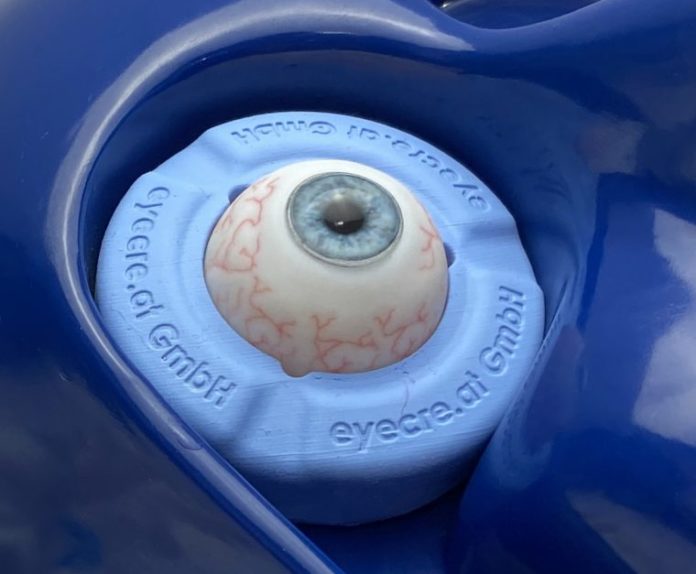By its very nature, the production of 3D eye models is generally a lengthy and complex process. Due to the eye’s watery and ultra-soft tissue, it can be difficult to easily recreate ophthalmologic anatomy using existing medical scanning technology, which means that models are developed from anatomical drawings. The models created using previous 3D printing technologies lacked true-to-life accuracy due to limitations in material options and colour capabilities.
Austrian 3D printing service provider Addion GmbH, which specializes in customized 3D printed medical model production, has recently designed an ultra-realistic surgical model for ophthalmology. To develop artificial eye models with unmatched level of realism, the company has worked with medical training solution provider and manufacturer Eyecre.at. GmbH.
At the heart of their manufacturing process, lies a full colour multi-material 3D printer Stratasys’ J750™ Digital Anatomy™ 3D printer released last year alongside two material solutions: TissueMatrix™ and GelMatrix™, which enable tomimic ultra-soft, watery tissue.
The truth is, ophthalmology has lacked high-quality artificial eye models that mimic the exact anatomy of a human eye including colour, haptics and complexity. Addion’s 3D printed eye models allow pharmaceutical companies to develop, advance, and demonstrate medical devices, while medical practitioners can perform surgical training on more standard eye procedures.
“For us, the possibilities with the Digital Anatomy Printer are endless, and despite the incredible results we’ve enjoyed to date, we are still just scratching the surface in terms of the technology’s potential,” says Hechenberger. “There are hardly any comparable alternatives for eye model production in our industry, particularly in the complex recreation of soft tissue with realistic colors and the variety of materials.
“For example, we produced an eye model where the cornea (the white part of the eye) can be detached and reattached. The skin layer on the model is a tenth of a millimeter and is detached with very small fine instruments, implanted, and then reattached. This level of detail was previously unimaginable.”
This ultra-realistic eye model is just one example of what Addion GmbH can do using 3D printing. We can expect more anatomical models in the future, with materials like BoneMatrix™ that can help simulate bone structures, or TissueMatrix interesting for vascular structures.
Remember, you can post job opportunities in the AM Industry on 3D ADEPT Media free of charge or look for a job via our job board. Make sure to follow us on our social networks and subscribe to our weekly newsletter : Facebook, Twitter, LinkedIn & Instagram ! If you want to be featured in the next issue of our digital magazine or if you hear a story that needs to be heard, make sure you send it to contact@3dadept.com






